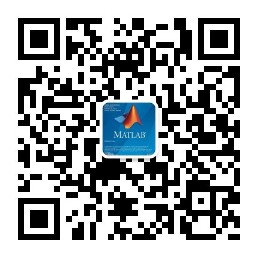
本文为挪威科技大学(作者:Kenneth Gade)的博士论文,共213页。
导航被定义为估计六个自由度的过程。我们看到,过去十年对导航的需求不断增加,增长的重要原因是低成本惯性测量单元(IMU)和全球导航卫星系统(GNSS)接收器的可用性增加,以及自主车辆的使用增加。在一般的导航工作中,特别是在设计和实现导航系统时,精确的符号系统是最重要的。必须在文档和程序代码中明确指定运动量,如速度、加速度、方向和角速度。
本文给出了一个优良符号系统的五个性质,并给出了一个满足这些性质的符号系统。符号系统包括在方程式正确时遵循简单规则的下/上标使用,因此,该系统对正确的演绎和实现做出了巨大贡献。下/上标和无二义性也使人们更好地理解线速度等参量,并大大减少了代码和/或方程变换过程中的误解/错误。
位置计算是任何导航系统的核心部分,常见的问题是不精确的计算(例如,当使用椭球地球模型或使用地图投影时)、复杂的实现和奇异性。此外,分离水平和垂直位置往往是可取的。通过用法向量表示地球椭球的水平位置(称为n向量),保持了这种分离,同时避免了其他此类表示的常见问题,例如纬度/经度的奇异性和不连续性以及地图投影的失真。此外,由于n-向量是3D向量,因此可以使用强大的向量代数直观地解决许多计算,并且代码行很少。已经提供了一个代码库供下载(用于多种编程语言),可以使用n-vector来解决许多最常见的位置计算。
在设计低成本导航系统时,以足够的精度估计航向往往是最具挑战性的部分,而支持这一任务的必要理论还不具备,使其更具挑战性。本文研究了航向估计的理论基础,并在此基础上,运用一致性数学原理,对不同的航向估计方法进行了分类。利用这个分类系统,我们已经确定了七种不同的方法来寻找实际导航系统的航向。采用的方法有磁罗经和陀螺仪、基于观测的两种方法、多天线GNSS和基于车辆运动的两种方法。借助于这一理论和一系列的方法,可以在充分理解和洞察任务的情况下完成具有挑战的航向设计任务。这样能够找到给定系统航向的可能方法,并且不会有任何方法被忽略。
在导航研究和开发过程中,适当的软件支持是至关重要的。为一系列不同的导航任务设计一个通用软件解决方案的目的是开发一个名为NavLab工具的动机。重要的应用领域包括研究与开发、模拟研究、记录传感器数据的后处理、传感器评估以及传感器采购和任务规划的决策基础。事实证明,通用的设计和实现是可行的,NavLab已经被用于导航各种不同的海上、陆地和空中车辆。用户包括研究小组、商业公司、军事用户和大学。对于水下导航,特别是自主式水下机器人(AUV),NavLab中使用了几种不同的技术来降低水平位置估计的不确定性。在可行的情况下,水下航行器可以浮出到水面进行GNSS定位,或者在水面航行器的跟踪下,将GNSS与声学定位相结合,并将定位结果传送出去。然而,在实际应用中,AUV往往需要在没有位置辅助的情况下进行长时间的导航,因此核心导航系统的漂移是非常重要的。该核心系统通常由IMU和多普勒速度计程仪(DVL)组成,其中DVL通常是限制漂移的最重要的传感器。在没有DVL的情况下,与自由惯性漂移系统相比,估计器中使用载具模型显著减小了位置漂移。即使是高端IMU也是如此。对于没有DVL的低成本系统,载具模型至关重要,它还可以与DVL一起使用,以提高导航系统的完整性。通过部署一个或多个向水下航行器提供距离测量的水下转发器,可以完全避免位置漂移。我们已经开发了一种只通过一个转发器估计精确位置的方法。该方法已在NavLab中实现,其定位精度与AUV跟随水面舰艇进行声学定位时的性能接近。
Navigation is defined as the process ofestimating the six degrees of freedom. We have seen an increased demand fornavigation the last decade, and important reasons for the growth are theincreased availability of low cost inertial measurement units (IMUs) and globalnavigation satellite system (GNSS) receivers, and the increased use ofautonomous vehicles. When working with navigation in general, and whendesigning and implementing navigation systems in particular, a precise notationsystem is of utmost importance. Kinematical quantities such as velocity,acceleration, orientation, and angular velocity must be unambiguously specifiedboth in documentation and program code. Five properties of a good notationsystem are identified, and a notation system fulfilling these properties ispresented. The notation system includes a usage of sub- /superscripts thatfollow simple rules when the equations are correct, and hence the systemcontributes strongly to correct deductions and implementations. The sub- /superscriptsand unambiguousness also lead to better understanding of quantities such aslinear velocity, and misunderstandings/errors during exchange of code and/orequations are greatly reduced. Position calculations are a central part of anynavigation system, and common concerns are imprecise calculations (e.g. whenusing an ellipsoidal Earth model or when using map projections), compleximplementations, and singularities. In addition, separating the horizontal andvertical position is often desirable. By representing horizontal position withthe normal vector to the Earth ellipsoid (called n-vector) this separation iskept, while avoiding common problems with other such representations, e.g. thesingularities and discontinuity of latitude/longitude and the distortion of mapprojections. Further, since the n-vector is a 3D vector, the powerful vectoralgebra can be used to solve many calculations intuitively and with few codelines. A code library solving many of the most common position calculationsusing n-vector has been made available for download (for several programminglanguages). Estimating heading with sufficient accuracy is often the mostchallenging part when designing a low cost navigation system, and the necessarytheory to support this task has not been available, making it even morechallenging. A study of the theory behind heading estimation has thus beenmade, and based on this theory, different methods to find heading have beencategorized by means of consistent mathematical principles. Using thiscategorization system, we have identified seven different methods to findheading for practical navigation systems. The methods are magnetic andgyrocompass, two methods based on observations, multiantenna GNSS, and twomethods based on vehicle motion. With the aid of this theory and list ofmethods, designing navigation systems where heading is a challenge can now bedone with full understanding and insight into the task. The possible ways tofind heading for a given system are immediately identified, and no method isoverlooked.
During navigation research and development,the support of appropriate software is vital. The aim to design one commonsoftware solution for a range of different navigation tasks was the motivationbehind the development of a tool called NavLab. Important areas of usageinclude research and development, simulation studies, post-processing of loggedsensor data, sensor evaluation, and decision basis for sensor purchase andmission planning. It has turned out that a generic design and implementation isfeasible, and NavLab has been used to navigate a variety of different maritime,land and air vehicles. Users include research groups, commercial companies,military users and universities. For underwater navigation, and in particular forautonomous underwater vehicles (AUVs), several different techniques have beenused in NavLab to reduce the horizontal position estimation uncertainty. Whenfeasible, the underwater vehicle can go to the surface for a GNSS fix, or befollowed by a surface vehicle that combines GNSS with acoustic positioning andtransmits the result. However, in practice an AUV must often handle longperiods without position aid, and thus the drift of the core navigation systemis of great importance. This core system often consists of an IMU and a Dopplervelocity log (DVL), where the DVL is usually the most important sensor to limitthe drift. In cases of DVL dropouts, the use of a vehicle model in theestimator significantly reduces the position drift, compared to a system infree inertial drift. This is the case even with high-end IMUs. For low-costsystems without a DVL, a vehicle model is vital, and it can also be usedtogether with a DVL to improve the navigation system integrity. Position driftcan be avoided altogether by deploying one or more underwater transponders thatprovide range measurements to the underwater vehicle. We have developed amethod where accurate position is estimated by means of only one singletransponder. The method is implemented in NavLab, and it has demonstrated aposition accuracy which is close to the performance achieved when the AUV isfollowed by a surface ship with acoustic positioning.
1 引言
2 运动学的统一表示法
3 导航中的基本主题
4 通用导航软件
5 水下导航
更多精彩文章请关注公众号:
